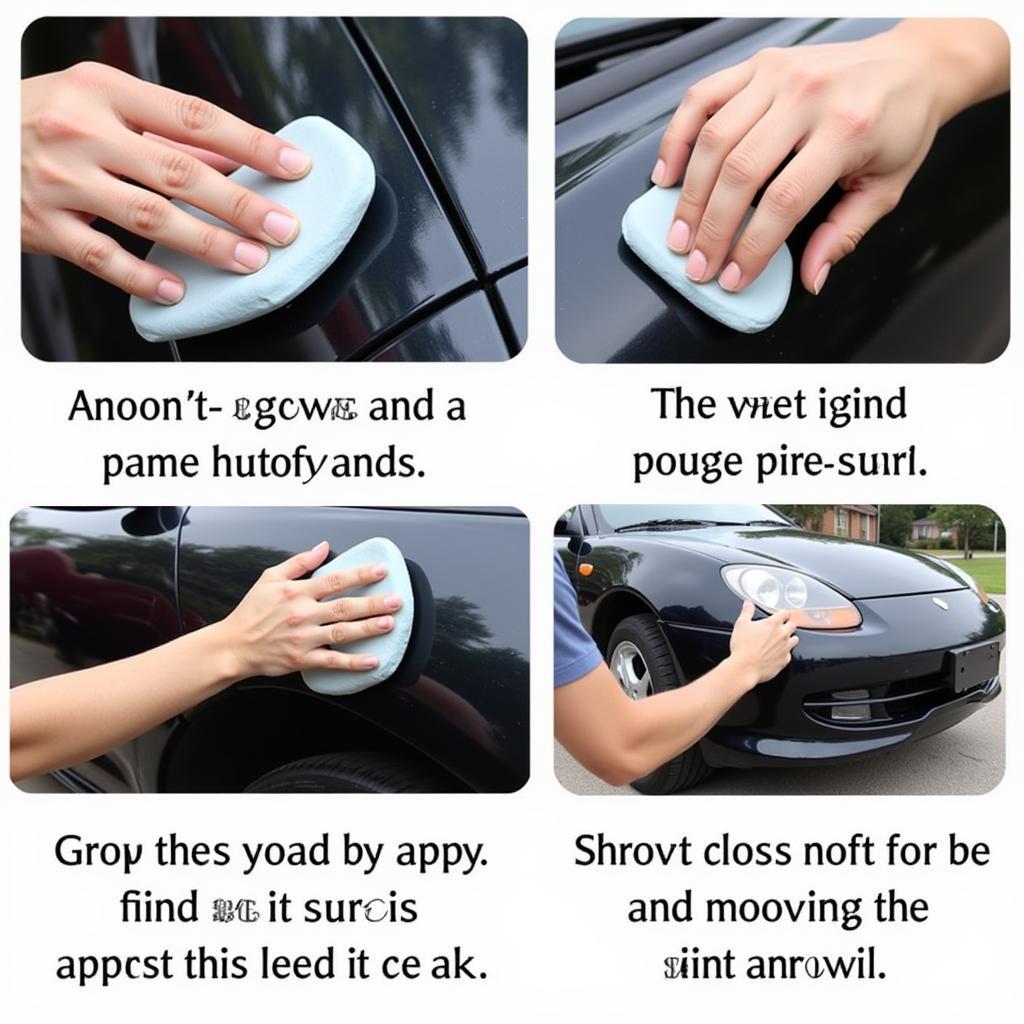Yes, you can use regular clay to detail a car. Using clay is a crucial step in achieving a truly flawless finish, removing contaminants that washing alone can’t handle. This article will explore the benefits, the process, and answer the most frequently asked questions about using clay for car detailing.
Understanding Car Detailing Clay
Detailing clay isn’t like the modeling clay you used as a child. It’s a specially formulated resin that acts like a magnet for embedded contaminants on your car’s paint, glass, and even clear plastic headlights. These contaminants include industrial fallout, tree sap, overspray, and brake dust. They can make your paint feel rough and dull the shine, even after a thorough wash. Clay safely pulls these particles out, leaving a smooth, glass-like surface.
Types of Detailing Clay
There are several types of clay available, including natural and synthetic. “Regular” clay typically refers to the standard grade of detailing clay. It’s effective for most detailing jobs and a good starting point for beginners. More advanced clays, like fine-grade or ultra-fine clays, are designed for more delicate finishes or for use on vehicles with very soft paint.
The Benefits of Using Clay
The primary benefit of using detailing clay is achieving a truly clean surface, free of embedded contaminants. This results in a noticeably smoother, shinier finish. The clean surface also allows waxes, sealants, and coatings to bond more effectively, providing longer-lasting protection.
Improved Paint Protection
By removing contaminants, clay prepares the paint for optimal wax or sealant application. This ensures a stronger bond and maximizes the protection provided by these products.
Enhanced Gloss and Shine
A clayed surface reflects light more evenly, resulting in a deeper, more brilliant shine. You’ll be amazed by the difference it makes in the overall appearance of your car.
How to Use Regular Clay on Your Car
Using clay is a straightforward process. Here’s a step-by-step guide:
- Wash and Dry Your Car: Thoroughly wash your car to remove loose dirt and grime. Drying is essential, as clay needs to be used on a lubricated surface.
- Knead the Clay: Warm the clay in your hands and knead it into a flat, patty-like shape. This ensures even distribution of pressure and prevents scratching.
- Lubricate the Surface: Spray a generous amount of clay lubricant onto a small section of the car’s surface. This prevents the clay from sticking and marring the paint.
- Glide the Clay: Gently glide the clay back and forth over the lubricated area. You’ll feel the clay grabbing the contaminants. Continue until the surface feels smooth.
- Fold and Knead: As the clay picks up contaminants, fold it over and knead it to expose a clean surface.
- Wipe Clean: Wipe the lubricated area with a clean microfiber towel.
- Repeat: Repeat the process on the remaining sections of your car.
- Inspect and Protect: Once the entire car is clayed, inspect the paint for any remaining imperfections. Follow up with a wax, sealant, or coating to protect the freshly cleaned surface.
Tips for Using Clay Effectively
- Use plenty of lubricant.
- Work in small sections.
- Don’t press too hard. Let the clay do the work.
- Discard the clay if it becomes heavily contaminated or dropped on the ground.
 Applying Clay Bar with Lubricant
Applying Clay Bar with Lubricant
Conclusion
Can you use regular clay to detail a car? Absolutely! Regular detailing clay is an effective tool for removing embedded contaminants and achieving a truly pristine finish. By following the proper techniques, you can dramatically improve the look and feel of your car’s paint, maximizing its shine and extending the life of your protective waxes and sealants. So, grab some clay and experience the difference yourself.
FAQs
-
How often should I clay my car? Generally, claying is recommended every 6-12 months, or as needed depending on the environment and driving conditions.
-
Can clay damage my car’s paint? When used properly with sufficient lubrication, clay is safe for most car finishes.
-
What type of lubricant should I use? Dedicated clay lubricants are readily available and recommended for best results.
-
Can I reuse the clay? Yes, you can reuse the clay as long as it’s not dropped on the ground or excessively contaminated. Fold and knead it to expose a clean surface.
-
What should I do after claying? Always follow up claying with a wax, sealant, or coating to protect the freshly cleaned surface.
For further information on car detailing, check out our other articles on paint correction and ceramic coatings.
Need assistance? Contact us via WhatsApp: +1(641)206-8880, Email: [email protected]. We have a 24/7 customer support team.

Leave a Reply